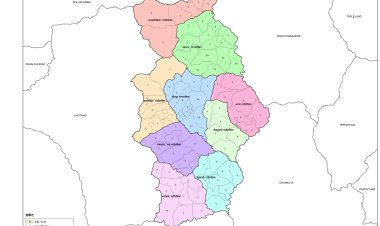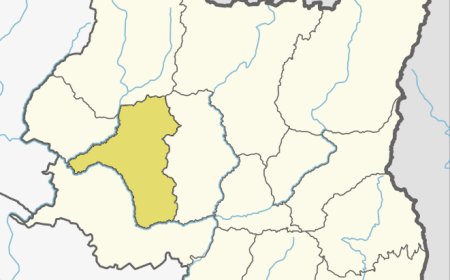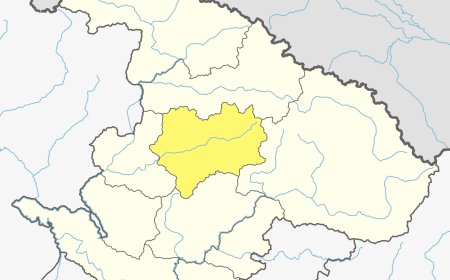The Devastating Effects of Global Warming on Mount Everest
The Everest region in Nepal is experiencing the impacts of global warming, including altered temperature and precipitation patterns. These changes are disrupting delicate ecosystems, jeopardizing the diverse plant and animal species that inhabit the area.
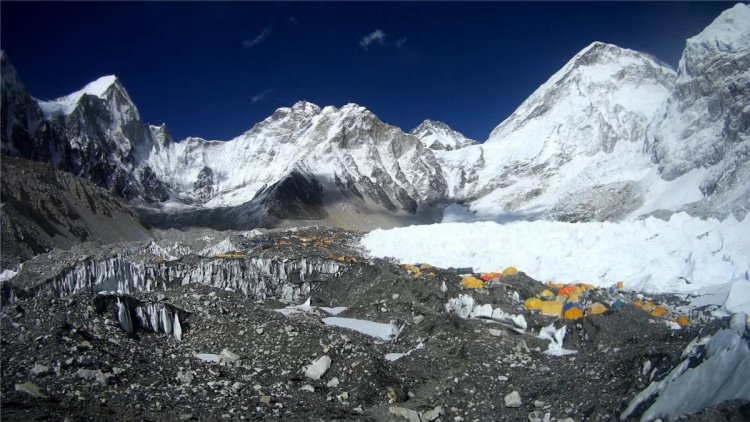
Mount Everest, the tallest mountain in the world, is facing a number of challenges due to global warming. The glaciers on the mountain are melting, the sea levels are rising, and the weather patterns are changing. These changes are making it more difficult and dangerous to climb Mount Everest, and they are also having a negative impact on the environment.
Mount Everest, the highest peak on Earth, has long captured the imagination of adventurers and mountaineers. However, this majestic mountain is not immune to the far-reaching impacts of global warming. Over the past few decades, rising temperatures and shifting weather patterns have significantly altered the environment of Mount Everest, leading to numerous adverse effects. This article explores the detrimental consequences of global warming on Mount Everest and emphasizes the urgent need for climate action.
-
Water Resources:
Water resources in Nepal are intricately linked to the Himalayan glaciers, including those on Mount Everest. These glaciers act as natural reservoirs, storing vast amounts of freshwater in the form of ice. However, the accelerated melting of these glaciers due to global warming poses a significant threat to Nepal's water supply.
Glacier meltwater plays a vital role in meeting Nepal's domestic water needs and supporting agricultural irrigation. As the glaciers melt at an alarming rate, the availability of freshwater resources is being compromised. This can lead to water scarcity, particularly in regions that rely heavily on glacier meltwater for their water supply. Without sufficient freshwater, communities may face challenges in accessing clean drinking water, sanitation, and hygiene, which can impact public health and well-being.
Agriculture is a key sector in Nepal, employing a significant portion of the population and contributing to the country's economy. Farmers depend on water resources for irrigation to sustain their crops. However, as the glaciers shrink and the meltwater decreases, agricultural practices are being disrupted. Reduced water availability can lead to decreased crop yields, impacting food security and the livelihoods of farmers. Changes in water availability can also necessitate adjustments in farming techniques and the cultivation of different crop varieties that are more resilient to changing water conditions.
-
Agriculture:
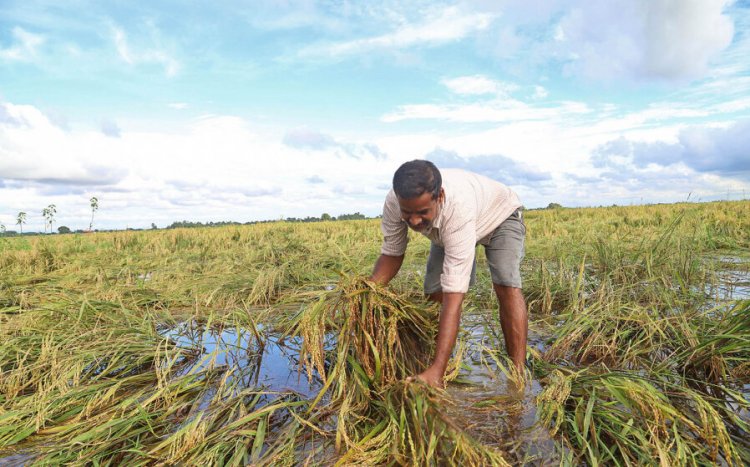
Agriculture plays a vital role in Nepal's economy, providing employment and sustenance for a significant portion of the population. However, global warming and its associated impacts pose challenges for agricultural practices in the country.
One of the key challenges is changes in water availability. As glaciers melt and precipitation patterns become altered due to global warming, the availability and distribution of water for irrigation purposes can change. Reduced glacier meltwater and irregular rainfall patterns can lead to water scarcity, particularly during critical periods of crop growth. Farmers who rely on consistent water supply for irrigation may face difficulties in ensuring optimal crop growth and productivity. This can result in reduced crop yields and economic hardships for farming communities.
Furthermore, altered precipitation patterns can disrupt the traditional crop-growing seasons. Changes in the onset and duration of monsoon rains can affect the timing of planting and harvesting, leading to uncertainties in crop cultivation. Farmers may need to adjust their agricultural practices, including the choice of crop varieties and planting schedules, to adapt to the changing climatic conditions. Such adjustments require access to timely and accurate weather information and support from agricultural extension services.
Global warming also increases the vulnerability of crops to pests and diseases. Higher temperatures and altered climatic conditions can create a favorable environment for the proliferation of pests and the spread of plant diseases. Crop pests, such as insects and fungi, may expand their range or increase in population, posing a threat to agricultural productivity. Farmers may need to employ integrated pest management strategies and disease control measures to mitigate these risks, which can increase their costs and reduce profitability.
-
Livelihoods and Tourism:

Mount Everest holds immense significance in Nepal's tourism industry and is a major source of income for local communities. However, the effects of global warming on Mount Everest can have direct consequences for tourism and the livelihoods of those dependent on it.
One of the primary impacts of global warming on Mount Everest is the retreating glaciers. As temperatures rise, glaciers on the mountain are melting at an accelerated rate. This not only alters the landscape but also poses safety concerns for climbers. The melting glaciers can result in unstable conditions, increased rockfall, and the formation of crevasses, making climbing more hazardous and challenging. The changing glacial landscape may require climbers to navigate unfamiliar routes, adding to the risks involved.
Increased avalanches are another consequence of global warming on Mount Everest. As temperatures rise, snow and ice become less stable, increasing the likelihood of avalanches. Avalanches pose a significant threat to climbers, Sherpa guides, and support staff. The risk of avalanches can lead to climbing restrictions, closures, and the need for additional safety measures, impacting the overall climbing experience and the number of tourists willing to take on the challenge.
The alteration of climbing conditions due to global warming can also affect tourism on Mount Everest. Changes in weather patterns, such as increased precipitation or more frequent extreme weather events, can disrupt climbing seasons and make it more challenging to plan expeditions. Unpredictable weather conditions can limit the number of suitable climbing days, leading to delays, cancellations, and logistical complications for climbers and expedition operators.
These impacts on tourism can have far-reaching consequences for the livelihoods of local communities. Sherpa communities, in particular, rely on the mountaineering industry for their economic well-being. Sherpas provide essential support as guides, porters, and expedition staff, and their livelihoods are closely tied to the success of climbing expeditions. A decline in tourist numbers and disrupted climbing seasons can lead to reduced employment opportunities, income losses, and economic hardships for Sherpa communities.
Addressing the impacts of global warming on Mount Everest and its associated tourism industry requires a multi-faceted approach. International collaboration and efforts to mitigate climate change are crucial to slow down the rate of glacial retreat and preserve the natural environment of the mountain. Strict regulations and safety protocols can help manage the risks associated with climbing and ensure the well-being of climbers and support staff.
Diversification of tourism offerings beyond mountaineering, such as promoting sustainable trekking, cultural tourism, and nature-based tourism in other parts of Nepal, can help reduce dependence on Mount Everest tourism alone. This would provide alternative income sources for local communities and contribute to the overall resilience of Nepal's tourism industry.
-
Sherpa Communities:
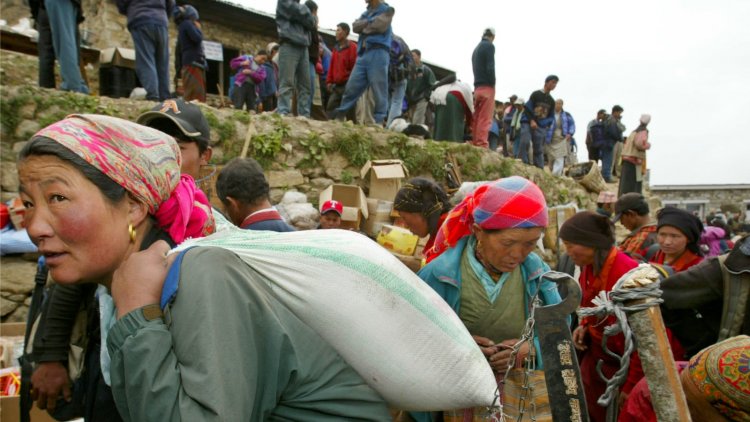
The Sherpa communities, indigenous to the Everest region, have a deep connection to Mount Everest and rely on the mountaineering industry for their livelihoods. However, global warming impacts, such as retreating glaciers and changing water sources, pose significant challenges to the Sherpa communities' way of life.
The retreating glaciers on Mount Everest, caused by global warming, have direct implications for Sherpa communities. Glaciers serve as a vital water source for drinking, irrigation, and other domestic uses. As glaciers shrink, the availability of water decreases, leading to water scarcity. Sherpa communities may face difficulties in accessing clean drinking water, maintaining agricultural practices, and meeting their daily water needs.
The mountaineering industry, which relies on the Sherpa people's expertise and support, can be directly affected by global warming. Reduced tourism to Mount Everest, resulting from safety concerns, disrupted climbing seasons, or changing landscapes, can have economic implications for Sherpa communities. With fewer expeditions and climbers, there may be a decline in employment opportunities for Sherpas as guides, porters, and support staff. This can result in income losses, reduced economic opportunities, and hardships for the Sherpa communities.
Moreover, changes in water availability and agricultural practices can impact Sherpa communities' subsistence farming and food security. Agriculture is an integral part of their traditional way of life. With altered water sources and uncertain precipitation patterns, farming practices become challenging. Shifts in crop-growing seasons and reduced water availability can lead to lower agricultural yields and potentially affect the availability of locally grown food. This can contribute to food insecurity and reliance on external food sources.
The Sherpa communities' cultural heritage and traditions are also intricately tied to the natural environment of the Everest region. Changes in the landscape due to global warming can disrupt their cultural practices, spiritual beliefs, and traditional knowledge systems that have been passed down through generations.
Addressing the challenges faced by Sherpa communities requires a comprehensive approach that considers their unique socio-economic and cultural circumstances. Promoting sustainable tourism practices that prioritize the well-being and participation of local communities can help mitigate the negative impacts of reduced tourism. This includes fair compensation, capacity building, and fostering community-led tourism initiatives that promote cultural preservation and sustainable development.
Investments in climate adaptation strategies, such as water resource management, can help address water scarcity issues and secure alternative water sources for Sherpa communities. Implementing climate-resilient agricultural practices, promoting agroforestry, and supporting diversification of income sources can enhance food security and strengthen the resilience of Sherpa communities in the face of changing climatic conditions.
Furthermore, empowering Sherpa communities through education, healthcare, and social services can contribute to their overall well-being and provide them with more opportunities to adapt to the evolving circumstances. Strengthening their voice and participation in decision-making processes related to tourism, natural resource management, and climate change policies is crucial for achieving sustainable development and preserving their cultural heritage.
-
Biodiversity:
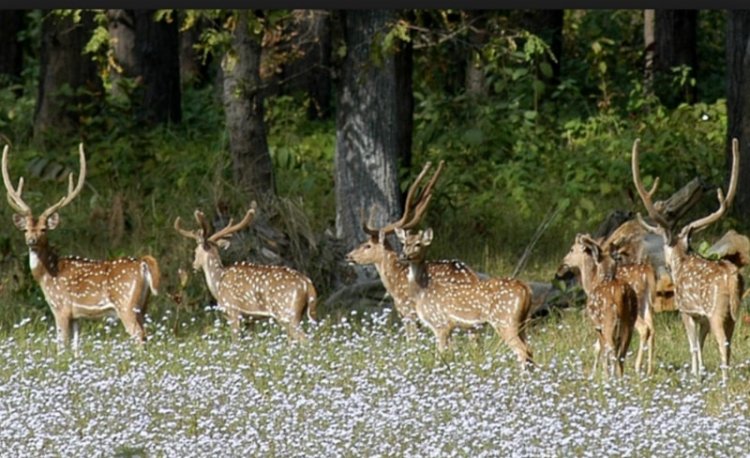
Nepal's biodiversity, including the ecosystems in the Everest region, is of great ecological significance. However, global warming poses a threat to the diverse plant and animal species that inhabit these ecosystems. The impacts of global warming, such as shifts in temperature and precipitation patterns, can disrupt these fragile ecosystems and result in the loss of biodiversity.
The Everest region encompasses a wide range of ecosystems, including alpine meadows, subalpine forests, and high-altitude habitats. These ecosystems are home to a variety of plant species, many of which are adapted to the harsh alpine conditions. Global warming-induced changes, such as rising temperatures, can directly affect these sensitive habitats. As temperatures increase, alpine ecosystems may experience changes in the timing of seasonal events, including flowering and seed germination. These alterations can disrupt the delicate balance of plant life and impact the survival and reproduction of plant species.
Changes in precipitation patterns also pose challenges to the biodiversity of the Everest region. Alterations in the amount, timing, and intensity of rainfall can impact the water availability and moisture levels crucial for the survival of plant species. Certain plant communities, including mosses, lichens, and specialized alpine plants, are highly dependent on specific moisture conditions. Changes in precipitation can lead to shifts in the distribution and composition of these plant communities, potentially resulting in the loss of unique and endemic species.
The impacts of global warming on biodiversity extend beyond plants and encompass the animal species that rely on these ecosystems for survival. The Everest region is home to various wildlife species, including the elusive snow leopard, Himalayan musk deer, and numerous bird species. Changes in temperature and habitat conditions can disrupt the ecological balance and impact the population dynamics of these species. Shifts in vegetation patterns and availability of food sources can affect the foraging behavior, migration patterns, and reproductive success of wildlife.
Loss of biodiversity in the Everest region can have far-reaching ecological consequences. Ecosystems are interconnected, and the disappearance of certain plant and animal species can disrupt the intricate web of ecological interactions. For example, the loss of a particular plant species can impact the pollinators or herbivores that depend on it, leading to cascading effects throughout the ecosystem. The loss of biodiversity can also reduce the resilience of ecosystems to environmental disturbances and limit their capacity to adapt to future changes.
Conservation efforts are crucial to mitigate the impacts of global warming on biodiversity in the Everest region. This includes the establishment and management of protected areas, such as national parks and wildlife reserves, to safeguard critical habitats and provide refuge for endangered species. Implementation of sustainable land-use practices, reforestation initiatives, and habitat restoration programs can also contribute to preserving biodiversity and enhancing ecosystem resilience.
What's Your Reaction?



























































































